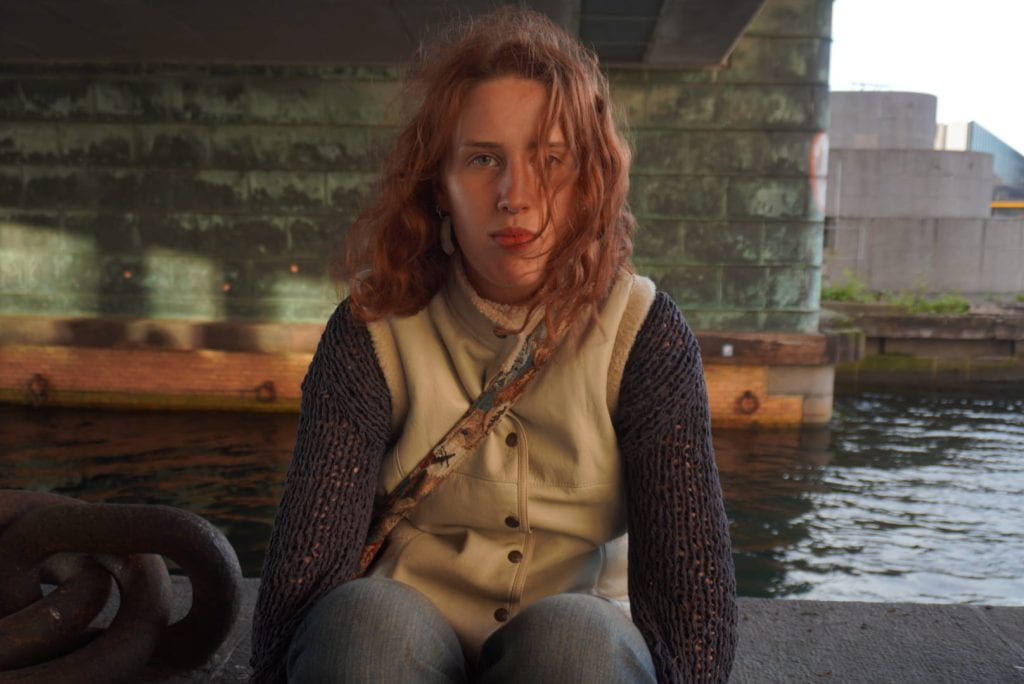Ever since the construction of the new island, Lynetteholmen, was set in motion, several factors have been under critique in the media. Now experts fear the possible impact on the popular harbor baths of Copenhagen.
Lea Høgenhaug is 23 years old. When she moved to Copenhagen at the beginning of 2021, she rapidly discovered how the harbor baths were great assembly points for the social life of both residents and tourists of Copenhagen. However, experts now suggest, that the construction of the new island, Lynetteholmen, might affect the sea-environment surrounding the capital. This concerns Høgenhaug, among others.

By Cecilie Hemmingsen and Hannah Straily
On the 7th of September, 2023, the danish think tank, GeoHav, published a note suggesting that the constructors of Lynetteholmen have not taken any usable seawater samples to measure the quality of water surrounding Copenhagen. According to Mikkel Martin Madsen, COO of GeoHav, this might create consequences for the water-loving residents- and tourists of Copenhagen:
“The problem with Lynetteholmen is that you’re digging in a seabed, where really serious concentrations of heavy metals have been deposited over centuries. And when you’re digging in that, you release some of these heavy metals into the water column, which is why we’re finding it really problematic that no seawater samples have been completed in relation to Lynetteholmen,” said Madsen and continues:
“And in Copenhagen, people are swimming in the harbor. Therefore it is also a significant problem if the heavy metals are released into the water column in which people are bathing.”
It was by coincidence Lea Høgenhaug stumbled over a sensational report, and afterwards decided to seek out more information in regards to the possible consequences of the Lynetteholm-construction. What scares her the most, is the lack of information among the public:
“I think it is outrageous that so many people are bathing in the harbors every single day, without knowing anything about what could be in the water. The harbor-areas are some of the most popular areas in Copenhagen. Especially during the summertime. And I actively had to seek out information to be aware that the water might not be healthy to bathe in.”
Meanwhile, Stiig Markager, Professor in Marine Biodiversity at Aarhus University, believes that the tourists and residents of Copenhagen only might be affected by Lynetteholm during the construction-process. According to him, the main problem with Lynetteholm is that it might affect the salt-balance in the Baltic Sea, and therefore the biodiversity:
“I think there’s a risk that it will affect the salt-balance in the Baltic Sea. And the consequences are potentially very great and serious. It might not happen. It might be a minor effect, but I think that the risk of those consequences must be taken very very seriously”, said Markager and continues:
“And the point is, that in the Baltic Sea, the salinity is lower than what you find in the oceans, and all organisms in the world’s oceans are adapted to that salt-content. But when you’re close to the coast, and you’re close to a large river, you have a mix of some high salinity with freshwater and therefore most of the organisms cannot survive.”
Either way, Høgenhaug is going to think twice before jumping into the harbor baths of Copenhagen in the future.
Lea Høgenhaug about Lynetteholm
This story is for an audience with an interest in traveling to Copenhagen- or with a general interest in the environment worldwide. Could be published on www.bbc.co.uk